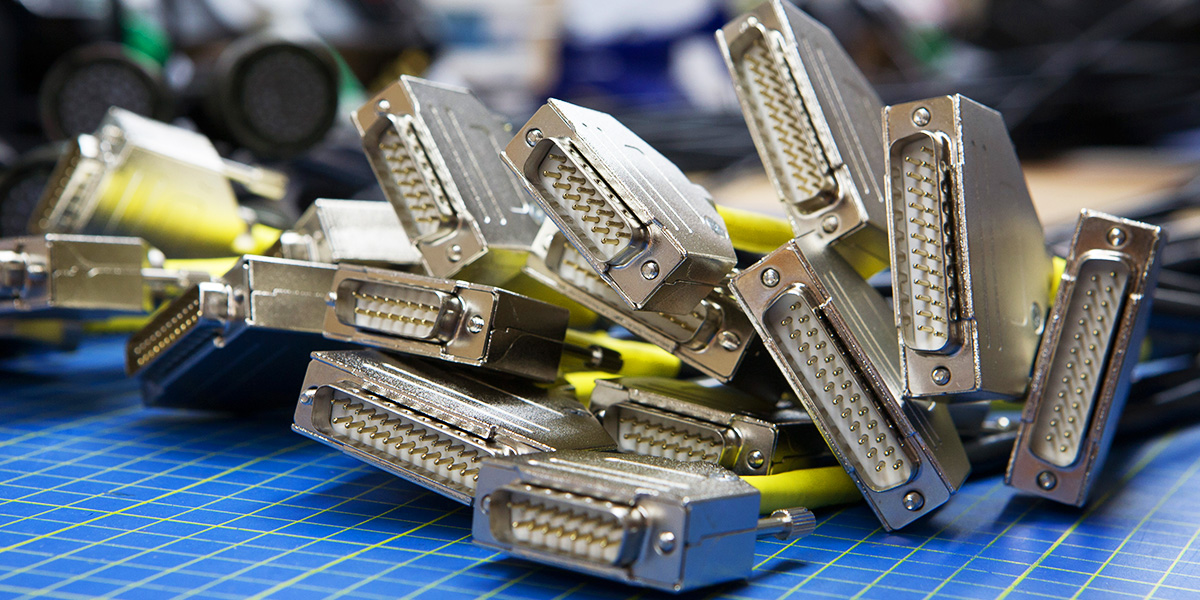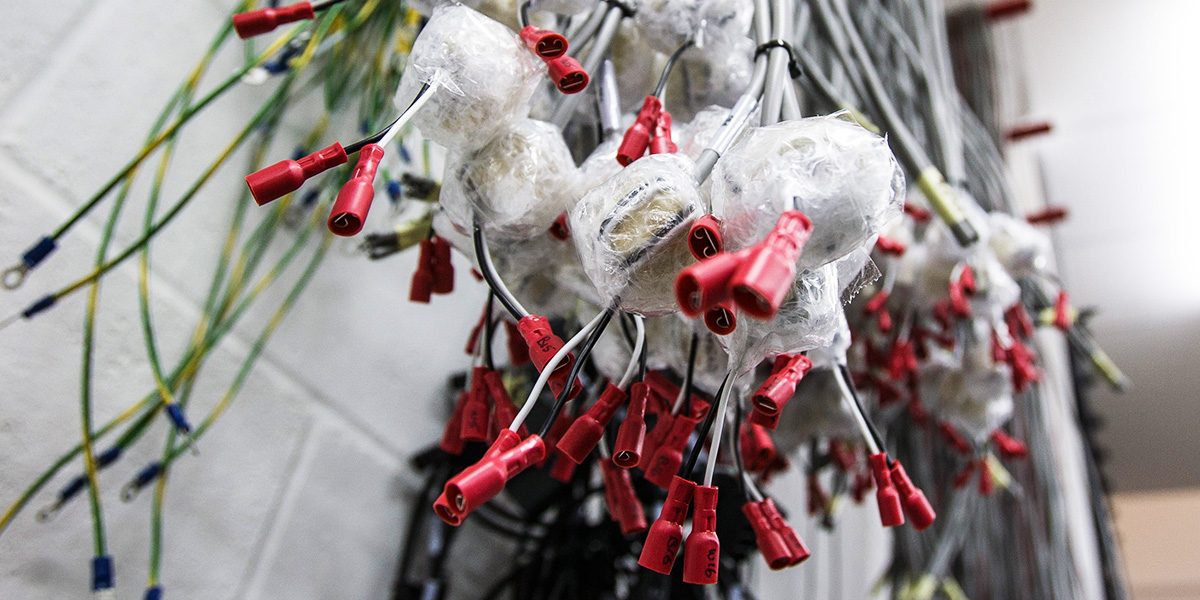Cable Assemblies vs Wire Harnesses - Which Are Right For You?
March 24, 2025 / Blog , Cable Assemblies
Looking for the right cabling solution for your new product? Unsure of the key differences between cable assemblies and wire harnesses? GTK can help.
Both cable assemblies and wire harnesses carry individual strengths and weaknesses when specified by electronics manufacturers, though the best choice will depend on your specific use case and requirements.
For example, individual cable assemblies may be quicker to manufacture; however, combining them into a single wire harness can make installation easier, reducing build time and, ultimately, expediting the production process.
GTK provides full product and engineering support for businesses in a range of specialised sectors. We can enhance your build, guiding you to make the correct choice between cable assemblies and wire harnesses.
In one recent case study, we looked at how we enhanced the design of a delivery drone system, supporting our customer with streamlined wire harness designs.
Here, we break down the key differentiating factors between cable assemblies and wire harnesses and outline how you can make the right choice for your product.
"Both cable assemblies and wire harnesses have their own associated set of strengths and use cases – so which is right for you?"
Cable assemblies: the basics
Commonly found in a wide range of electronics, cable assemblies are a collection of cables or wires that are cut to length and bound together in a specific configuration. Cable assemblies are typically encased in an outer jacket, eliminating exposed wiring and protecting your cabling from the elements.
Cable assemblies can consist of single- or multi-core cables, with cores connected at either end. Sometimes, cable assemblies can have stripped and tinned free ends, ready to be connected to a large piece of equipment by the customer.
Thanks to our custom manufacturing capabilities, we can create entirely custom cable assemblies to meet your exact specifications.
We also have the capability to add specific cable assembly enhancements to improve either the function or the aesthetics of your cable assembly. These might include overmoulded cable assemblies, which provide additional protection and durability, or waterproof cable assemblies, suitable for use in marine or outdoor applications.
Thanks to our design-for-manufacture (DFM) approach, cost-down opportunities are also available, so you can create your cable assemblies and remain on or under budget.

We can create entirely custom cable assemblies to meet your exact specifications.
Cable assembly use cases
Cable assemblies are used for a wide range of applications and can be found in electronics across a variety of different sectors.
Our cable assemblies are always bespoke and made-for-purpose – for instance, we can manufacture mil-spec cable assemblies for use in the defence and aerospace sectors, produced in-line with our AS9100 accreditation.
If you’re using a display in your application, we can provide display cable assemblies using a range of connector types for different functions, such as backlights and touchscreen panels.
Cable assemblies needed for harsh environments can be overmoulded to enhance their durability or to provide unique features, such as custom latching mechanisms.
Wire harnesses: the basics
Sometimes referred to as looms, wire harnesses also consist of a combination of different cables for use within electronic solutions. However, where a cable assembly’s configuration of cables is encased in a protective outer sheath, wire harnesses are typically bound together using ties, straps or cable lacing.
Although the individual cables within a wire harness may be insulated, its lack of external protective jacket provides greater flexibility in design and installation than that offered by a cable assembly.
Wire harnesses offer the capability for individual cables to branch out and perform different functions, while keeping the cabling organised and uniform. The sections where cables split out are known as breakouts. A wire harness therefore has multiple cable ends, often comprising several individual assemblies.
To simplify the design and production processes, wire harnesses can be constructed on a loom board to ensure the correct dimensions and functions. A loom board allows the wire harness to be assembled as it would function in its intended application, providing a clear visual reference for correct assembly, layout, and routing.
Wire harness use cases
Due to the lack of external casing, wire harnesses are best-suited for use as internal wiring, where they are unlikely to be exposed to the elements.
Wire harnesses can be found across consumer and commercial applications – for instance, they are commonly used as internal wiring in household appliances and consumer electronics, as well as being implemented in industrial data centres where complex wiring and routing is essential.
This is not to say that wire harnesses are not durable – the automotive sector often designs complex, robust wire harnesses to manage a car’s engine functions, such as fuel injection and ignition timing – but they are rarely used in external applications.
Given the multi-faceted possibilities of a wire harness, they can be used to control key functions within a range of application-specific machinery, such as within the industrial, medical and even aerospace sectors.

Wire harnesses consist of a combination of different cables.
The difference between cable assemblies and wire harnesses
In summary, cable assemblies and wire harnesses are both a configuration of a number of wires or cables intended to deliver a specific purpose within an electronic solution.
However, the cables within a cable assembly are usually protected within an external jacket, while wire harnesses are not. The lack of outer jacket means that wire harnesses have split points within the loom and can feature different connector ends throughout the cable.
Cable assemblies, on the other hand, give the appearance of a single cable with one connector at the end.
Both cable assemblies and wire harnesses have their own associated set of strengths and use cases – so which is right for you?
How do you choose which is right for your product?
Cable assemblies boast increased durability – so, if your project requires external cabling or cabling that is likely to be used outside or in a high-intensity environment, cable assemblies are likely to be the best option for you. They do, however, offer less design flexibility. Your product design could therefore be limited by the accommodation of a single cable assembly.
Wire harnesses are more flexible and can be easier to install, thanks to the lack of external casing and having all connections grouped in a single loom. They are also generally more cost-effective, as they have a simpler design and are easier to manufacture. Often, we find our customers’ existing products utilise cable assemblies for internal wiring, when switching to a wire harness would reduce costs and help expedite a product’s build time.
A wire harness is not always the right selection for a product, but where organisation of cables and cost are key factors, switching from a cable assembly to a wire harness can have huge benefits.
Why choose GTK as your partner?
GTK boasts over 30 years’ experience in the world of electronics and our deep knowledge of cable assemblies and wire harnesses means that we can advise on the best route for you and your specific product.
We work with customers in a range of specialised sectors and understand the durability and compliance requirements sought after by businesses in markets like aerospace, defence, medical and security.
We boast key accreditations in traceability and quality control and will add value at every stage of the manufacturing process. From analysing your BOM to providing drawings, prototypes, and design support, you can rest assured that you’ll receive both a quality service and a quality product.
Should you need to scale up production, we can accommodate your every need. Thanks to our manufacturing locations across the UK, Romania, and the Far East, we can quickly increase manufacturing capacity without compromising on quality.
Under our Core Material Strategy, we stock large quantities of commonly used components, providing a reliable parts supply that’s protected against external factors, such as supply chain disruption.
Get in touch below to discuss your specific requirements or simply find out more about our services by chatting to our expert team.